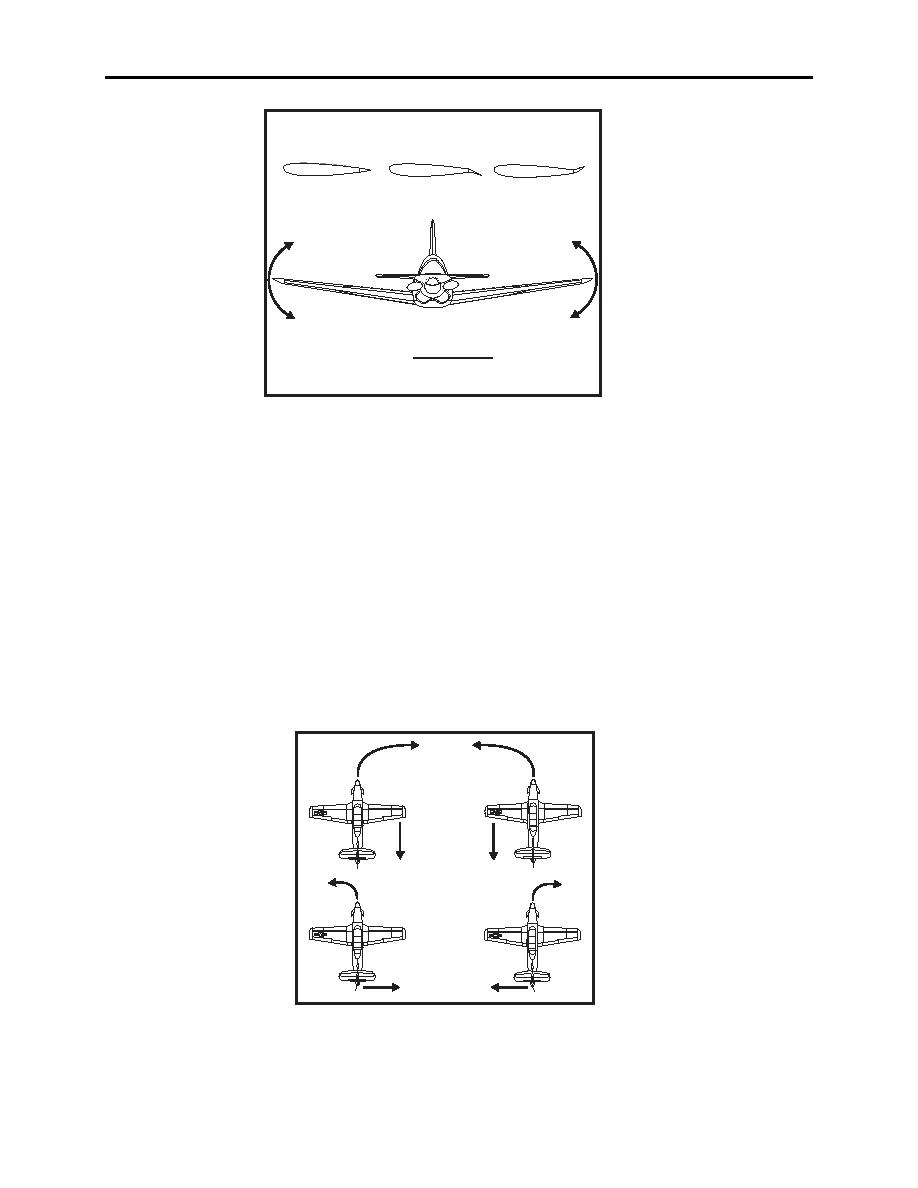 |
|||
|
|
|||
|
|
|||
| ||||||||||
|
|  CHAPTER THREE
T-34C CONTACT
Raising Aileron
Lowering Aileron
Increases Lift
Normal Lift
Decrease Lift
Action of ailerons move the airplane
about its longitudinal axis
Figure 3-1 Aileron Control
the control stick, the right aileron surface deflects downward and the left aileron deflects upward.
The force exerted by the airflow on the deflected surfaces raises the right wing and lowers the
left wing. This happens because the downward deflection of the right aileron changes the wing
camber and increases the angle of attack and lift on that wing. Simultaneously, the left aileron
moves upward and changes the effective camber. This action results in a decreased angle of
attack and less lift. Thus, decreased lift on the left wing coupled with increased lift on the right
wing causes the airplane to roll and bank to the left.
Since the downward deflected aileron produces more lift, it also produces more drag, while the
opposite aileron has less lift and less drag. This added drag attempts to pull or veer the
airplane's nose in the direction of the raised wing; that is, it tries to turn the airplane in the
direction opposite to that desired. This undesired veering is referred to as adverse yaw.
(Figure 3-2).
Yaw
Drag
Anti
Anti
Adverse Yaw
Yaw
Yaw
Rudder Correction
Figure 3-2 Adverse Yaw
3-2
USE AND EFFECT OF CONTROLS
|
|
Privacy Statement - Press Release - Copyright Information. - Contact Us |